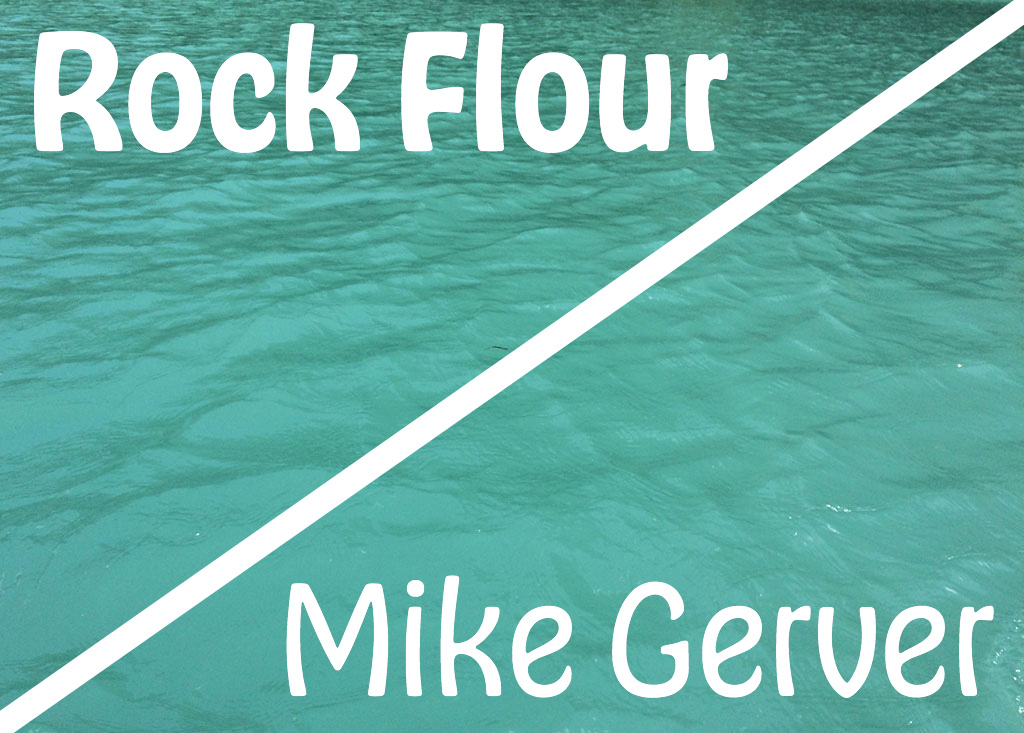While traveling through Glacier National Park, Banff National Park, and Jasper National Park it is impossible to miss the efflorescent presence of crisp, crystal blue lakes. These lakes are fed by a local glacier whose snowmelt runs down the mountainside. Oftentimes, this water collects in valleys that were previously carved by the glacier itself, but why are these lakes such a surreal spectrum of blues, turquoises, and greens?
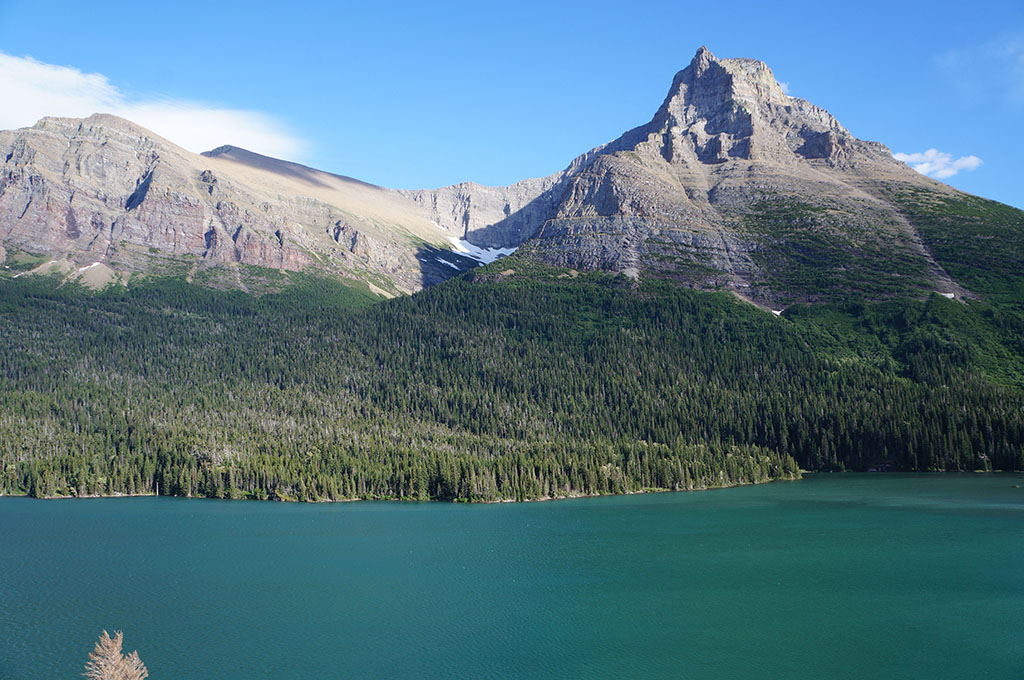
After getting to experience these lakes, I was able to visit the Athabasca Glacier in the Columbia Icefields of Alberta, Canada where I had the opportunity to walk around on one of the region’s many glaciers. I found some snowmelt running down the glacier and stopped to drink it. Aside from it being the coldest, freshest water I have ever had, it too was a strikingly bright blue color. This small stream of runoff was no more than three or four centimeters deep in the deepest area, so it was not a highly concentrated body of water. Yet, it still maintained this rich color.
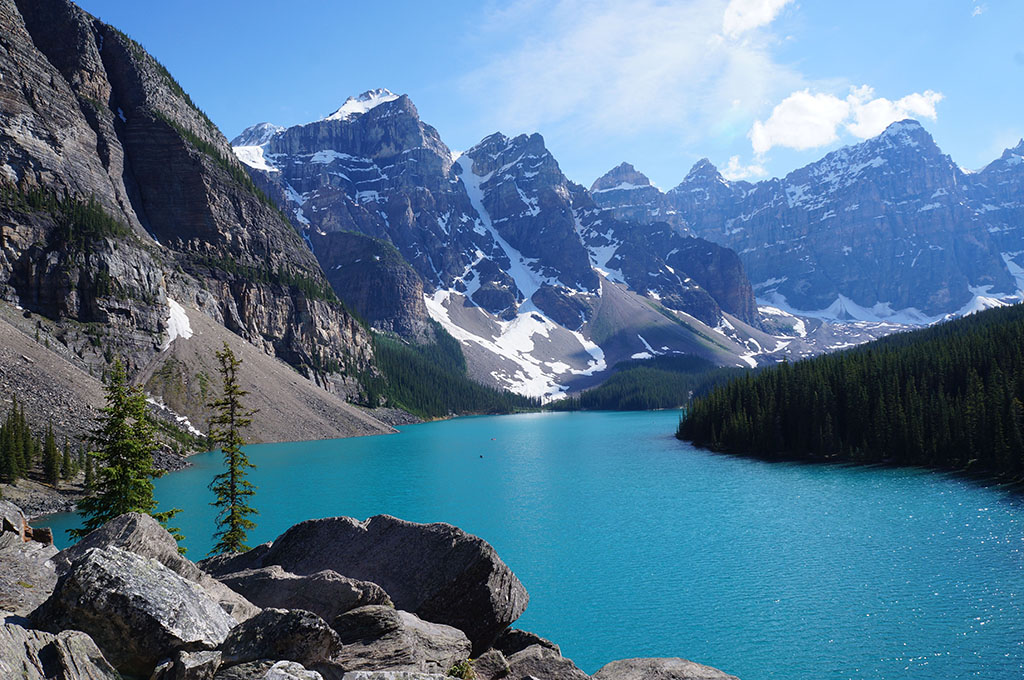
I thought back to Victoria Finlay’s book Color: A Natural History of the Palette and how finding a naturally occurring blue color was a struggle for many geographical regions. But right in front of my face seemed to be an endless supply of blues.
After a boat trip on Saint Mary Lake in Glacier National Park I got an answer. These lively colors were a product of a substance called “rock flour.” To understand how rock flour is formed, one must recognize the behavior of glaciers.
Glaciers are massive ice sheets capable of carving out valleys and lakes. They are constantly moving, going at a rate similar to the speed at which our fingernails grow. Considering the size of these ice sheets, this is actually a quick pace.
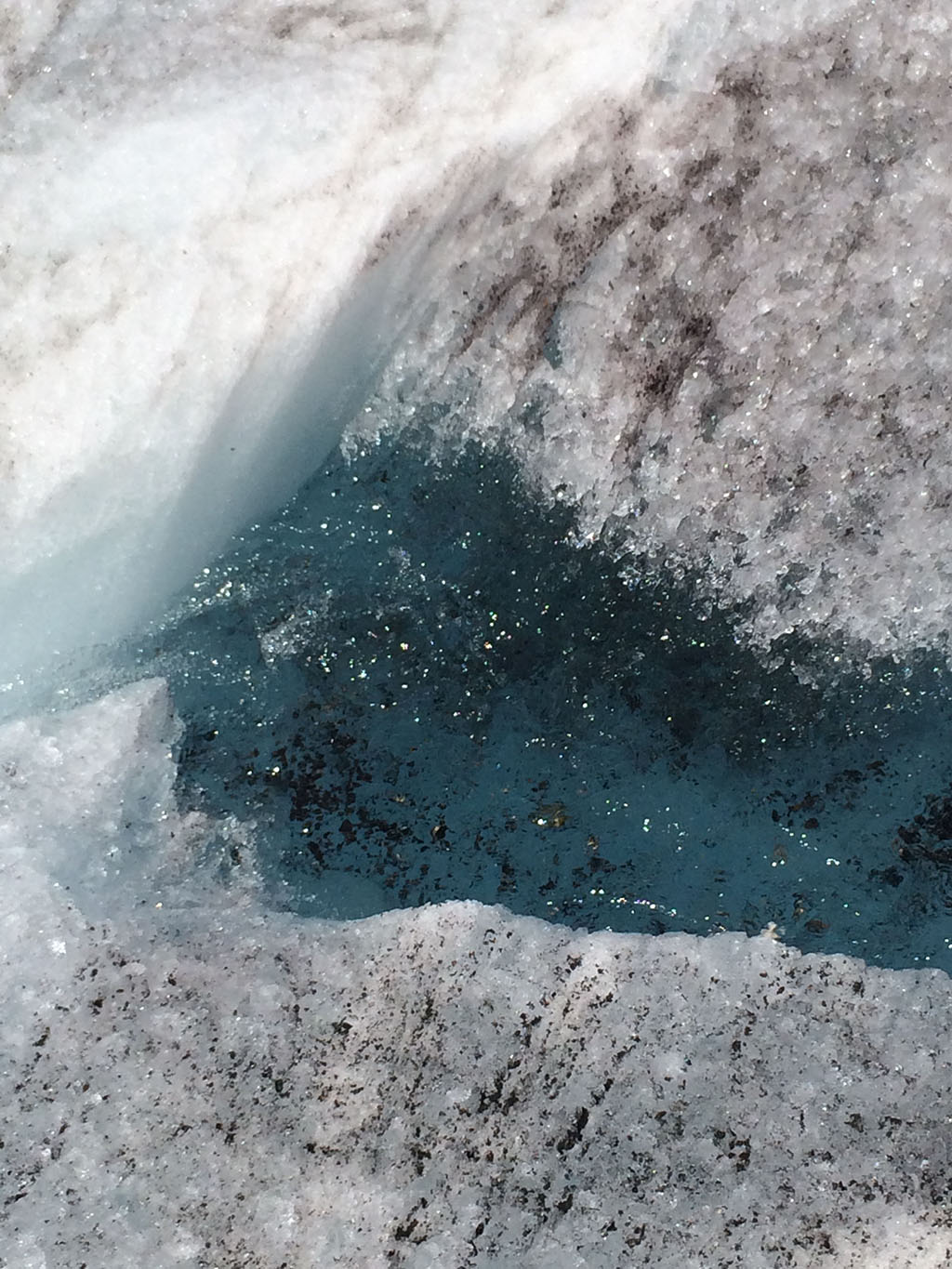
As a glacier moves down a mountain, mainly from the force of gravity, it picks up stones and drags them along. These stones rub against each other and against other rocks on the mountainside. The rocks grind against each other and create an extremely fine powder. This powder is rock flour and it is the key component to the color of the water.
As the glacial snow and ice melts, it carries the rock flour with it until it reaches a stream or a lake.
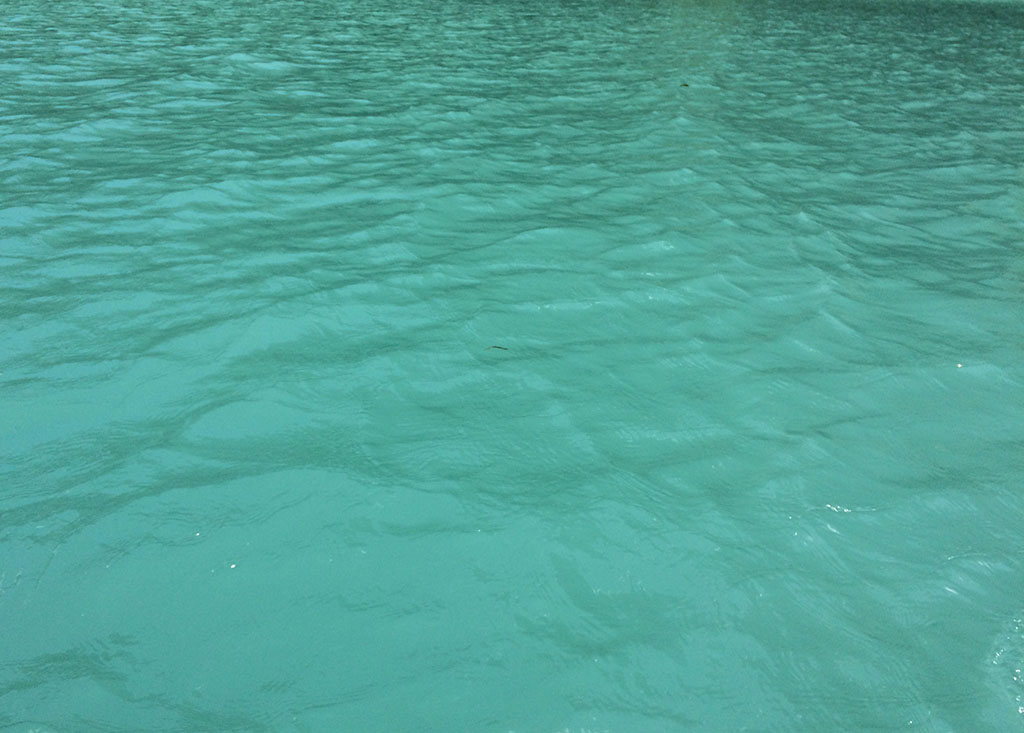
Normally, water absorbs the warm colors of the spectrum.(1) This leaves blue, green, indigo, and violet wavelengths for our eyes to perceive.(2) When rock flour is introduced into the water, it absorbs the indigo and violet wavelengths leaving only blue and green for our eyes to recognize.(3) This happens because the flour does not actually sink once it is in the water. Since it is so fine and light, it stays suspended in the water instead of accumulating at the bottom.(4) The water can appear blue, turquoise, or green depending on the concentration of rock flour. Higher concentrations of rock flour will make a lake appear greener, while lower concentrations will make a lake appear turquoise or blue.
• • •
1Heather Love. What Is Rock Flour? A Moment of Science – Indiana Public Media.
2Ibid.
3Ibid.
4Ibid.
copyright 2017 Michael Gerver
Nike footwear | nike air barkley posite 76ers shoes for women Maximum Volume DJ4633-010 Release Date – SBD

